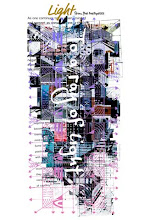These goddess symbols can be found in the "Hands of Sabagios". Below that hand, you can see a woman lying down with her child and breastfeeding.
Known for lying women is the statue of the goddess of Malta in the Mediterranean Sea. Her body shape, hand position, navel sculpture, etc. are common to the statues of goddesses in each country. In addition, a sculpture like triangular underwear can be seen faintly on the lower abdomen of the statue.
In addition, many statues of goddesses breastfeeding children have been excavated from various countries. From left to right, the Mediterranean Cyprus (c. 1300 BC), the Mesopotamian goddess of the serpentine face (c. 5500 BC), the statue of Malaga in Spain, and Syria (c. 4500 BC).
From the left, the Indus Valley Civilization Mehengal (c. 2700 BC), Isis (female) and Horus (children) in Egypt, the Vincha civilization (c. 5700 BC), and Krishna and Yashoda (1100s) in India.
From the left, a clay figurine holding a child in the Jomon period in Tokyo (around 3000 BC), and a female haniwa holding a baby burial mound in Koganezuka, Ibaraki Prefecture (around 600).
Two faces are engraved on the Jomon pottery on the left side, and a crescent moon is also drawn on the lower face, and a thin whirlpool pattern can be seen in it. The same face as the two faces on this pottery can be seen in The Jomon Venus in Nagano Prefecture on the right side, and a whirlpool pattern is also engraved on the ears. This statue also has a thick lower body, a chest, and a sculpture on the navel.
The female figure with eyes excavated from Syria around 3400 BC also has a having chest, triangular underwear, and a zigzag pattern on the body. Zigzag was also found on the stone pillars of Gobeklitepe in Turkey.
Similarly, many female figures with eyes have been excavated from Syria, and there is a zigzag pattern on the body.
Also, in Iran's Jiroft culture around 3000 BC, where a stone handbag was excavated, a person with a horn holding two snakes with both hands is depicted as shown in the image on the left below. A statue in the same pose was also found on the island of Crete in Greece around 2000 BC, and is a statue of a goddess with a chest that grabs the two snakes in the image on the right with both hands.
This same pose is also found in Egypt, Europe, the Middle East, India and the Americas and is a common symbol. In the image on the left, Horus in Egypt has two snakes and scorpions in his hands, and on the right is also Egypt, with a cross-shaped hand called Ankh holding a was-sceptre. Horus is a man because he has a man.
From the left, Afghanistan, Iran, Scotland.
The next image on the left is Viracocha, the god of the Inca Empire in South America, holding a long object in both hands. The North American indigenous Navajo god Yei on the right is depicted with corn.
The seal of the Indus Valley Civilization in India holds a lion in both hands.
Another artifact from the Indus Valley Civilization in India shows the goddess in the same pose, with six-pointed stars and elephants engraved above and below it.













































0 コメント